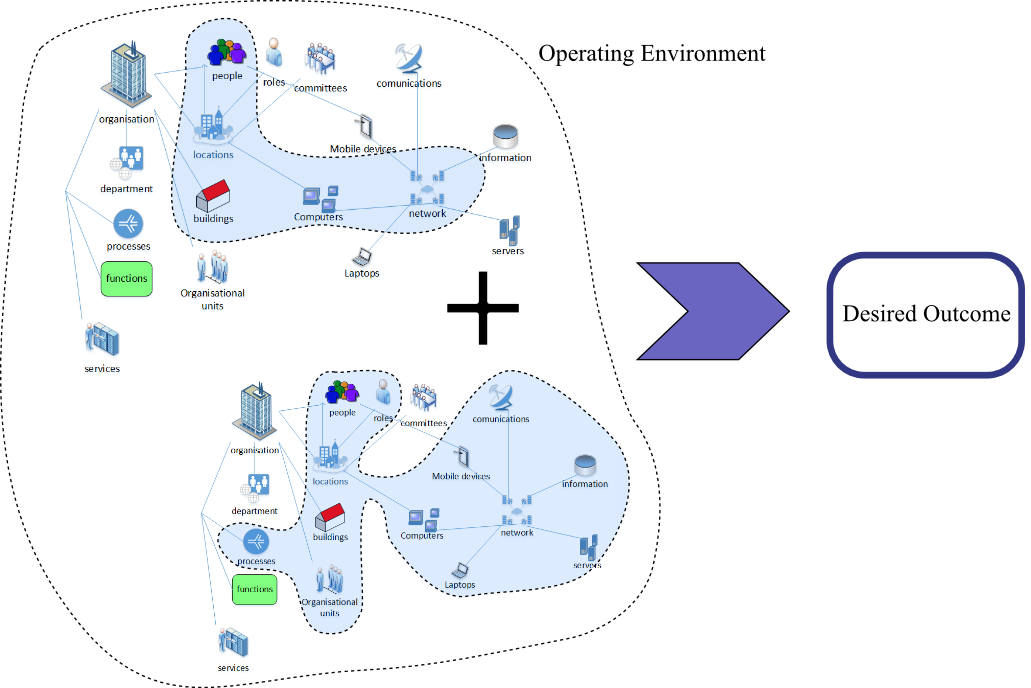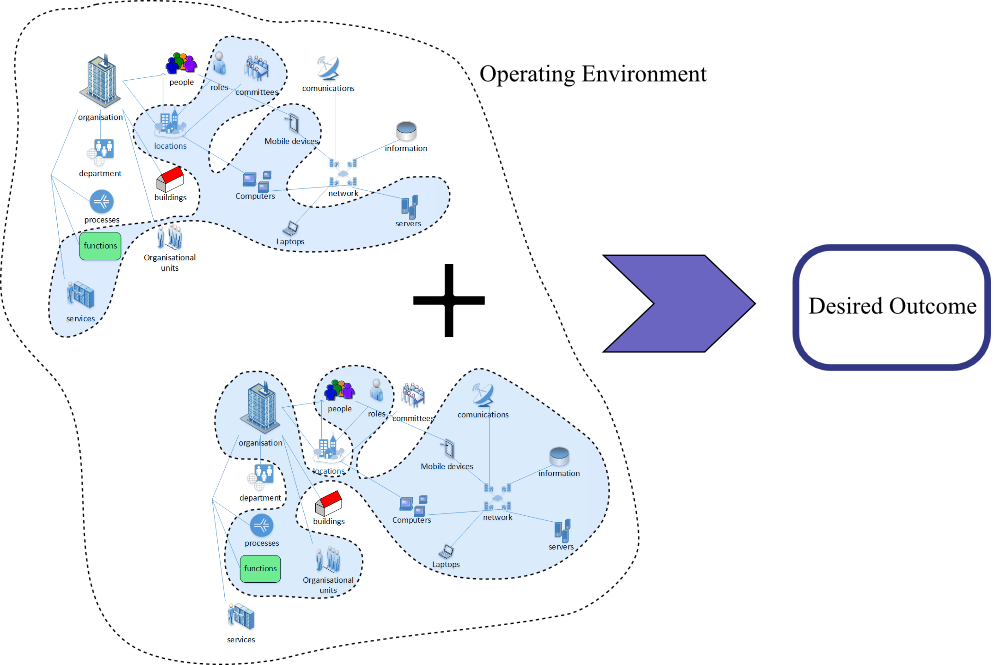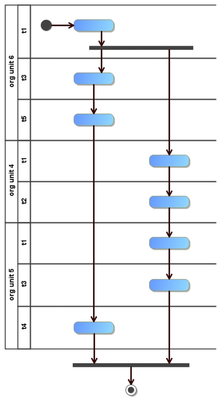Introduction
...
Alternatively one could choose to define capability using the architectural unification approach POLDAT
- Process (business processes)
- Organisation (structures)
- Location (Geographical information)
- Data (models, life cycles, security etc)
- Application (software, security, interoperability etc)
- Technology (infrastructure)
Both TEPIDOIL and POLDAT pay no attention to organisation unit boundaries (business unit, sector, service, function etc) but weave a conceptual path through segments of the enterprise, selecting those areas within those segments that, deliver the characteristics needed by the capabilities to deliver the outcome.
More often than not, an outcome is delivered through multiple capabilities
And these arrangements can come in all shapes and sizes
We can now start to see that as we weave through the different parts of the organisation we need to ask the following questions (to help define the nature and characteristics of a capability)
...
Our next task is to try and illustrate this weaving nature that we have described above? One approach that we are currently trying is to map the thread through a UML activity model. We are not using it to map a process flow but to simply illustrate the way in which a number of entities must collaborate to realise the capability. In our illustration we use swimlanes to provide a visual way of representing organisational units and other sub units (do not confuse this model with value stream mapping, that is not what we are doing).
This model captures the weaving nature through our first example of one capability to deliver a goal |
|---|
Each blue round tangle represents an activity or set of activities being executed (remember we are not mapping process flow)
In this example we show multiple capability paths delivering a goal |
|---|
So how does this help me
That's a very good question and it depends on your perspective; there are several advantages that I would like to describe and I am sure that you can think of others.
...
So the reality then becomes as shown in the figure below. Here we see that the individual who wants the house built must interact with each organisation, clearly outlining their goals. A set of capabilities (comprised from the functionality within those organisations) will be assembled to deliver those goals. Note we have only shown one capability per organisation but there may be many.







